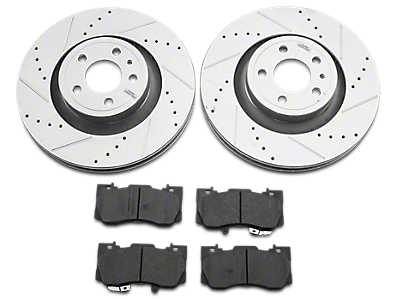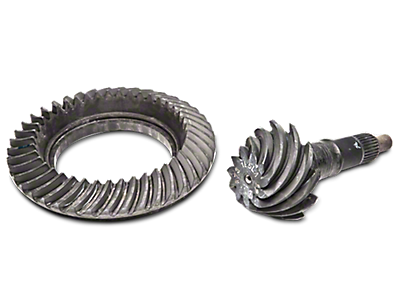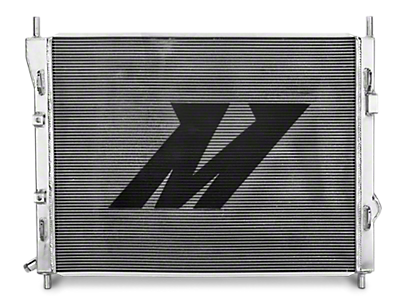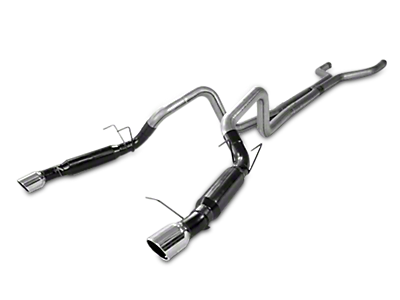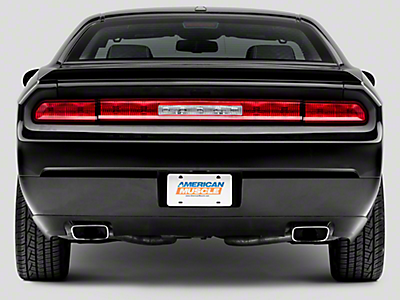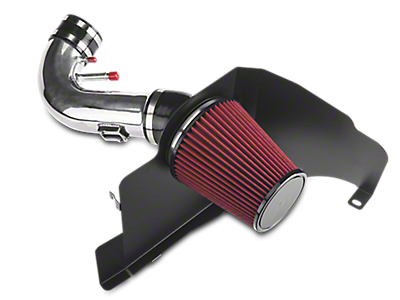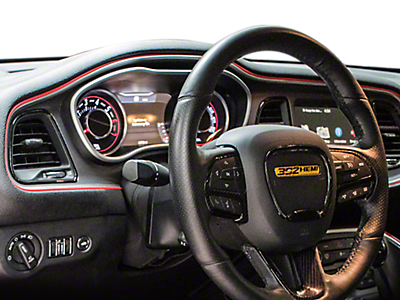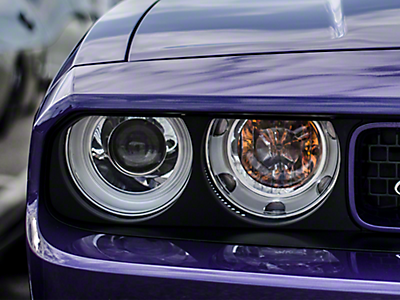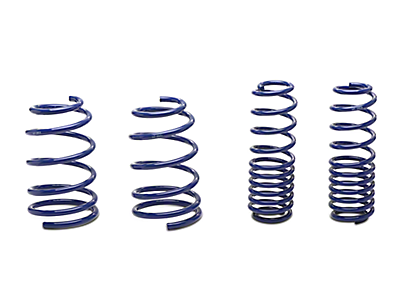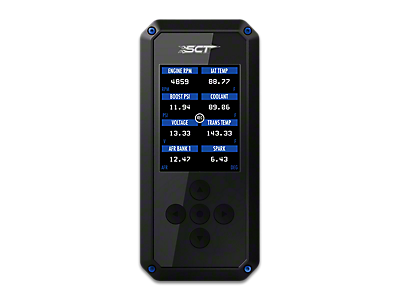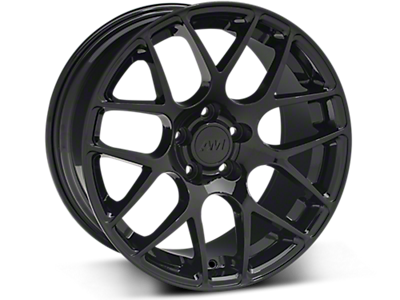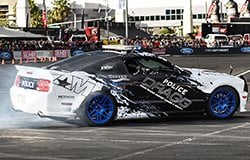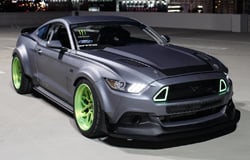The 2019 Dodge Challenger is one of the most impressive muscle cars on the market from the almighty SRT Hellcat down to the V6, it's a force to be reckoned with. Plus, the amount of aftermarket support available is massive, so finding new parts, mods, and accessories is fun, exciting, and of course, easy. At AmericanMuscle, we make finding Challenger parts and accessories a breeze with our convenient filter options and sales techs that are on standby waiting to answer any questions you have about modifying your vehicle. While modifying your vehicle is fun, we also carry a wide range of replacement parts to keep your 2019 Dodge Challenger running smoothly. We’ll help you replace any part of the exhaust, swap out dirty air and fuel filters, and keep your traction sturdy with plenty of tire options. Explore our vast selection of premium parts from brands you can trust like Holley, Edelbrock, K&N, Borla, SCT, and Status. We stock parts for your engine, interior, and exterior at AmericanMuscle, so we have you covered from the headlights to your header gaskets.
2019 Dodge Challenger
The 2019 Dodge Challenger is a two-ton coupe rocking old school 70s-era style and modern performance. Updates for this model year includes a new rear-drive GT, the debut of the Scat Pack Widebody trim which includes flared-out fenders that add 3.5inches to its width, and the new Hellcat Redeye model. The 2019 Challenger’s base V6 delivers 305 horsepower and 268lb-ft of torque, and is paired exclusively to an eight-speed automatic. Dodge also offers a class-exclusive all-wheel drive system for the V6. The R/T comes with a 5.7L Hemi V8 capable of 375 horsepower, and the Scat Pack with a 6.4L V8 delivering 485 horsepower. This is the most powerful engine in its class. One the high performance side is the SRT Hellcat, packing a 6.2L supercharged V8 with 717 horsepower and 656lb-ft of torque. The new Redeye model also has a supercharged V8 producing 797 horsepower and 707lb-ft of torque, if the 'base' Hellcat was not enough.
The Ultimate Performance Mod
If you’re looking to wring out every last bit of horsepower in your V8 and money is no object, then an aftermarket supercharger is right up your street, not least as this is the system that Dodge uses on its own SRT Hellcat & Redeye models to output their eye-watering 700+ horsepower. But why a supercharger over a turbocharger? It fundamentally comes down to their design. At its most basic level, a supercharger is a forced induction system mechanically powered by the Challenger’s engine through a belt and pulley system. It will force more air (moreover, oxygen) into the engine than is possible through natural aspiration. A turbocharger on the other hand is powered by the velocity and heat energy of the hot and expanding exhaust gases as they rush out of the engine’s cylinders. With a turbocharged car, there’s a slight throttle delay as the system needs to ‘spool up’ before it can deliver an additional burst of power - thus you’ll hear the terms ‘boost lag’ or ‘turbo lag’. A supercharger has no lag, throttle response is immediate, but its system is less efficient as it uses the engine’s own power to spin itself. Fuel efficiency will take a hit, but you’ll also be seeing significant horsepower and torque gains, as much as 46% (running 7-9 psi of boost) depending on the model and the exact configuration of your Challenger.
- No power lag
- 46%+ power increase
- No complicated pipe routing
There are a few other important things to note when considering superchargers for your Challenger. There are three key designs: Roots, Centrifugal and Screw Type superchargers, each with their own pros and cons. Kits will also frequently be labelled as Stage 1, 2 or 3 which indicate their boost levels, fueling requirements and power output.
Challenger Demon Style
2019 was the year Dodge discontinued its iconic Challenger Demon, which some might argue is the ultimate in muscle cars. Along with its hugely powerful V8 engine, the Demon also featured the largest hood scoop ever fitted to a stock vehicle. Even though the Demon itself is no longer available as new, you can still replicate its signature frontend look with an aftermarket hood. This is a complete replacement for your stock equivalent, and will usually be manufactured from fibreglass or carbon fibre. Fibreglass - the heavier of the two materials - is found at the less costly end of the spectrum, as it is a well established medium in which to construct body parts. Carbon fibre, on the other hand, is more expensive due to its more intensive and precise manufacturing process, of which makes a lighter, more durable final product.
2019 Dodge Challenger Interior Parts
The inside of most muscle cars isn't usually the biggest concern, but it's where you'll spend most of your time, so why not improve the cabin’s comfort and technology? With the right 2019 Dodge Challenger accessories for your interior, you can update your radio, improve the sound system, and select a gauge cluster that fits your performance goals. Replacing the seats, adding seat covers, and choosing a more ergonomic steering wheel will help you improve the interior's comfort. Then, you can round it all out with lighting options that help you set the mood to something that resonates with you.
2019 Dodge Challenger Exterior Accessories
One of the best ways to modify your 2019 Dodge Challenger is to improve the way it looks on the outside with improvements to the bumper, trunk, and headlights. Adding aftermarket headlights and taillights is the quickest way to improve your vision and add a more aggressive look to your Challenger. Louvers, fender flares, and window tints are also great additions. Adding new wheels and tires will also change how your Challenger looks and performs. The right wheels will look great, and if you pair them with the right tires it will help you maximize your traction, which increases performance. At AmericanMuscle, we also carry lightweight hoods and spoilers to make your Challenger more lightweight and aerodynamic.
2019 Dodge Challenger Performance Accessories, Parts & Mods
Performance mods are where it's at when you’re upgrading a muscle car. Whether you want to get a V6 Challenger up to speed or maximize performance for your V8, exhaust, headers, cold air intakes, and intake manifold parts will help you get there. If bolt-ones aren't enough for you, we also carry turbos, superchargers, and intercoolers. Plus, plenty of suspension parts are available to ensure that the new power you add translates to better performance, so you can lower your Challenger, add a camber, or improve its shocks, struts, and control arms. Not only will new suspension parts help your tires stock to the pavement, but they will also improve your Challenger’s ability to corner at the track. When you need new 2019 Dodge Challenger accessories always choose AmericanMuscle for fast, convenient, and affordable shipping you won't find elsewhere.
